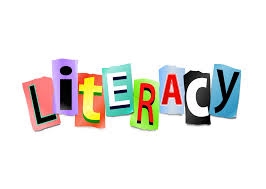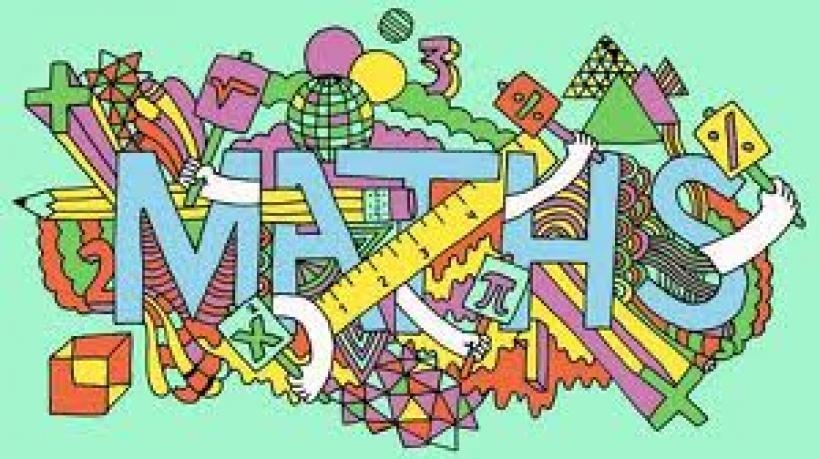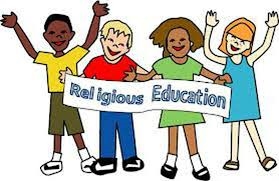St. Joseph is a very important saint. He is the husband of the Virgin Mary and the foster-father of Jesus. This is the second feast of St. Joseph the Church celebrates, the first falling on March 19. The bible says very little about St. Joseph and does not contain even one word spoken by this carpenter of Nazareth. But even without words, he shows how deep his faith was, in this we see his greatness.
Saint Joseph is a man of great spirit. He is great in faith, not because he speaks his own words, but because he listens, in silence, to the words of the Living God. Today we celebrate his witness of hard work. He was a carpenter who worked many hours a day and the little boy Jesus would help his dad in the small shop. St. Joseph teaches us that any work we do is important. Through it we do our part to serve our family and society.
But even more than that, as Christians we understand that our work is like a mirror of ourselves. It shows what kind of people we are, that is why we want our work to be done with care. Many countries have one day every year to show their respect for workers. This helps people to see how good it is to work to make this world a better place. In 1955, the Church has given us a wonderful model of work, St. Joseph the worker.
Welcome to Year 5 St Joseph's website.
Welcome to Year 5/6 St Joseph's website.
Our class teacher is Mrs Egboh and our teaching assistant is Mrs Isiguzo.
This term we will be focusing on developing the children’s skills in all curriculum subjects, further details are below.



GENRE – POETRY
Weather Poetry
Comprehension focus: vocabulary, inference, prediction, explanation, and retrieval
Writing focus: To write a rhyming poem about the weather.
Literary device focus: alliteration and personification
SPaG focus: colons, semicolons, commas and apostrophes
GENRE- NON-FICTION
Famous artists and styles of art, chocolate and biographies
Comprehension Focus: retrieval, vocabulary, and summary
Writing focus: To write informative paragraphs focusing on retrieving, summarising, and ordering information.
SPaG Focus: synonyms, punctuation and spelling
GENRE –FICTION
Portal stories, Science fiction stories, untold stories, Black Powder
Comprehension focus: vocabulary, inference, prediction, explanation, and retrieval
Writing focuses: To write a fantasy story. To write a science fiction story. To express a viewpoint through a diary entry. To use ideas collected from reading to write a letter. Develop evaluation and editing skills
SPaG focus: colons, semicolons, word focus, active and passive voice, synonyms.
Click on the link below for helpful information and activities which are all literacy based;




Summer term Numeracy units:
Algebra
Step 1: Form equations
Step 2: Solve equations
Step 3: Find pairs of values
Step 4: Solve problems with two unknowns
Geometry - 1
Step 1: Understand and use degrees and classify angles
Step 2: Classify angles
Step 3: Measure angles
Step 4: Calculate angles around a point
Step 5: Calculate angles on a straight line
Step 6: Calculate vertically opposite angles
Steps 7 and 8: Calculate angles in a triangle
Step 9: Calculate angles in a quadrilateral
Step 10: Calculate angles in regular polygons
Step 11: Calculate angles in irregular polygons
Step 12: Calculate angles in circles
Step 13: Draw shapes
Step 14: Classify 3-D shapes
Geometry - 2
Step 1: Position and direction
Step 2: Coordinates – first quadrant
Step 3: Coordinates in all four quadrants
Step 4: Solve problems with coordinates
Step 5: Translation of shapes
Step 6: Lines of symmetry
Step 7: Reflection of shapes
Statistics
Step 1: Draw line graphs
Step 2: Read and interpret line graphs
Step 3: Read and interpret bar charts
Step 4: Read and interpret tables
Step 5: Read and interpret timetables
Step 6: Read and interpret pie charts
Step 7: Pie charts with percentages
Step 8: Drawing pie charts
Step 9: Find the mean
Measurement
Step 1: Converting units
Step 2: Converting kilograms and kilometres
Step 3: Converting millimetres and millimetres
Step 4: Converting units of length
Step 5: Converting miles and kilometres
Step 6: Imperial measures
Step 7: Converting units of time
Step 8: Calculating timetables
Tables Test:
Weekly tests for x0, x1, x 2, x 3, x 4, x5, x 6, x7, x8, x9 x10, x11 and x12. Children must know the inverse of these too (related division facts).

























Life cycles and reproduction
Unit outcomes
During this unit, the children will explore the life cycles of plants and animals and learn about different types of reproduction, including sexual and asexual reproduction in plants.
Pupils who are secure will be able to:
-
Describe the life cycle of a plant, including the reproduction stage.
-
Compare the life cycle of a mammal and a bird.
-
Compare the life cycles of an amphibian and an insect.
-
Describe asexual reproduction in plants.
When working scientifically, pupils who are secure will be able to:
-
Observe and compare equivalent parts in different flowers.
-
Research the life cycles of different mammals.
-
Pose questions to compare the life cycles of different birds.
-
Suggest how one temperature may affect egg hatching.
-
Use data to describe a relationship and make predictions.
-
Represent root growth over time on a line graph.
Forces and space: Unbalanced forces
Unit outcomes
During this unit, the children will explore falling objects and raise questions about the effects of air resistance. They will also explore forces that make things begin to move, get faster, or slow down, examine the impact of friction on movement, and find out how it slows or stops moving objects. In addition, they will explore the effects of levers, pulleys, and simple machines on movement.
Pupils who are secure will be able to:
-
Describe gravity, air resistance, water resistance and friction, and their effects.
-
Describe the relationship between surface area and air and water resistance.
-
Explain how to make an object aerodynamic or streamlined.
-
Describe the effects of levers, pulleys and simple machines on movement.
When working scientifically, pupils who are secure will be able to:
-
Analyse predictions, data, and anomalies to draw a conclusion.
-
Plan a fair test to investigate air resistance.
-
Write a method.
-
Evaluate a method and judge the degree of trust.
Click on the link below for helpful information and activities which are all science based;




To The Ends of the Earth:
In this branch, pupils will continue to journey with St John’s gospel. They started the year learning about the Fall and humanity’s broken relationship with God. In this branch, they will look at how St John’s account of the Resurrection alludes back to that narrative and shows that in Jesus, the relationship with God is restored.
Dialogue to Encounter (Year 5):
Pupils should recognise that the texts Christians refer to as the Old Testament are texts of the Jewish religion. For Christians, they are ‘old’ as Jesus Christ fulfils a new covenant, which the New Testament recounts. However, God’s covenantal relationship with Abraham, told in the book of Genesis, remains, and the texts of the Old Testament remain relevant to Christians. However, Christians read the Old Testament in the light of Christ, seeing signs of him in the Old Testament's words, actions, and deeds. In the encounter dimension of this branch, pupils will be invited to explore more about the importance of Hebrew, the holy language for Jewish people, and understand how prayer, beliefs and sacred objects form part of Jewish life. The Torah is central to Jewish life, and the scrolls in synagogues are sacred objects. The Torah contains different names for God, many of which are familiar to Christians. The Shema prayer is the most important part of Judaism because it reminds Jewish people that there is only one God.



Sing up Music Scheme
Summer term Music units:
Unit 7: Balinese gamelan
During this unit, the children will explore the music of Bali through two dynamic musical forms: gamelan beleganjur – a lively kind of percussion music originally performed during battle – and the kecak vocal chant. Children will learn about the history and context of both forms, develop an understanding of the repeating cycles that structure almost all Balinese music, and explore and perform the interlocking rhythms that underpin both these musical forms.
Most children will be able to:
-
Develop knowledge and understanding of the Balinese musical forms of gamelan beleganjur and kecak.
-
Listen and match vocal and instrumental sounds to each other and notation.
-
Sing/chant a part within a kecak performance.
-
Compose a kecak piece as part of a group.
Unit 8: Composing in ternary form
During this unit, the children will learn that the Ternary form (ABA) is a very satisfying musical shape used by composers across many genres for centuries. This unit uses ideas from an excellent piece by French composer Maurice Ravel called Laideronnette, or Empress of the pagodas. It tells the simple story of a little girl walking through a Japanese forest. Ravel uses only the traditional pentatonic scale in this work, and we will use that as the basis for the unit while also exploring dynamics (volume) and tempo (speed).
Most children will be able to:
-
Improvise and compose, creating a piece in ternary form using a pentatonic scale, and containing an accompaniment, contrasting dynamics and tempo.
-
Notate their ideas to form a simple score to play from.
-
Listen, appraise, and respond to music using drawings and words. Recognise that music can describe feelings and tell a story.
-
Understand and recognise the ternary form.
Unit 9: Kisne banaaya
This song from India and Pakistan explores how our world and its different creatures came into existence. The children will learn choreography to support the learning and understanding of the song (in Hindi), sing the song comparing different performances, and play an instrumental accompaniment on tuned percussion.
Most children will be able to:
-
Sing and play the melody of Kisne banaaya.
-
Sing in a four-part round accompanied with a pitched ostinato.
-
Compose a simple accompaniment using tuned instruments.
-
Create and perform their own class arrangement.

.gif)
.gif)
.gif)
Unit: The Victorians
During this unit, the children will learn about the Victorian era, including Queen Victoria's life, famous Victorian inventions, the Industrial Revolution, and how railways changed travel and trade. They will also explore what life was like for Victorian working children, the types of crimes and punishments used, and why Lord Shaftesbury was a crucial Victorian figure.
Unit outcomes
Pupils who are secure will be able to:
-
To put the Victorian period into historical context.
-
To use historical sources to find out about the Victorian period.
-
To find out about the life of Queen Victoria.
-
To think about why Victoria became such a popular monarch.
-
To find out about some famous Victorian inventions.
-
To explain how new inventions changed people’s lives during the Victorian period.
-
To find out what the Industrial Revolution was.
-
To explain how the Industrial Revolution changed Victorian Britain.
-
To find out how the introduction of the railways changed travel and trade.
-
To describe different viewpoints about the new railways.
-
To find out what sort of jobs Victorian children took on.
-
To explore what life was like for Victorian working children.
-
To explore why Lord Shaftesbury was a crucial Victorian figure.
-
To find out how Lord Shaftesbury’s campaigns improved children’s lives during the Victorian period.
-
To find out about typical crimes and punishments in the Victorian period.
-
To compare Victorian punishments to the modern-day justice system.
-
To understand what an empire is and how Britain developed its Empire.
-
To explore how trade changed during the Victorian period.



Unit: Spreadsheets
During this unit, the children will learn that a spreadsheet is a computer application that allows users to organise, analyse, and store data in a table. They will also be introduced to the importance of data headings. The children will also learn that objects can be described using data and will build a data set (a collection of related data that can be manipulated using a computer) within a spreadsheet application and apply appropriate number formats to cells. In addition, they will begin to use formulas to produce calculated data and create formulas to use in their own spreadsheets using cell references. They will also plan and calculate the cost of an event using a spreadsheet and use their spreadsheet to answer questions about the data they have selected.
Unit outcomes
Pupils who are secure will be able to:
-
To enter data and formulas into a spreadsheet.
-
To order and present data based on calculations.
-
To add, edit and calculate data.
-
To use a spreadsheet to solve problems.
-
To plan and calculate a spending budget.
-
To design a spreadsheet for a specific purpose.



P.E. lessons for St Joseph will take place on Tuesday and Thursday afternoons with our Non-Stop Action Coach.
Athletics and Rounders:
The children will learn how to:
Use running, jumping and throwing in isolation and in combination.
Play competitive games, modified where appropriate.
Communicate, collaborate and compete with each other.
Develop flexibility, strength, technique, control, and balance. Understand how to improve in different sports.
Evaluate and recognise success. Compare performances with previous ones and demonstrate improvement.
Indoor PE (taught by Non-Stop Action)
Dance:
In this unit, the children learn different dance styles and focus on dancing with others. They create, perform, and watch dances in various styles, working with partners and groups. In dance, the children think about using movement to explore and communicate ideas, issues, feelings, and thoughts. As they work, they develop an awareness of different ideas' historical and cultural origins.
During the summer, the children are required to wear a white PE t-shirt, navy shorts or blue jogging bottoms, a blue sweatshirt (if needed), and black plimsolls or trainers. PE kits cannot be shared or borrowed from friends or siblings. As was the case last term, the children will continue to come to school in their PE kits on their allocated PE days. Please ensure that your child has their PE shoes in their bag, as they must come to school dressed in their usual black school shoes.

Unit: Cultural Tradition in Art
During this unit, the children will learn that artists are often a product of the culture and society in which they grew and are therefore influenced by the customs of, and what is normal for, their society. Often, their artwork reflects upon and depicts the objects, ideas and customs that their society values. Looking at the artwork of different cultures can give us an insight into their valued traditions and inspire us to reflect on our own cultural values.
Threshold Concepts Covered
-
Artists and Artisans
-
Visual Language
-
Colour Theory
-
Techniques
-
Process
-
Styles and periods
Unit outcomes:
Pupils who are secure will be able to:
-
To recognise that many cultures use art to tell stories.
-
To investigate the art from a particular culture.
-
To investigate and understand what is meant by folk art.
-
To identify the features of folk art.
-
To use the materials of Indian folk artists to create their own piece of art in the style of Madhubani.
-
To realise that some cultures share the same features and that patterns are used as a recurring effect throughout cultural art.
-
To explore the media and materials which may be used in the cultural art process.
-
To begin to explore the Cultural Tradition artist Richard Kimbo.
-
To explore the process used by Richard Kimbo when creating his batiks.
-
To explore how batik has been used in fashion and renamed Madiba shirts.
-
To have a go at sketching their own batik clothing design.

Unit: Bridges
During this unit, the children will design and make a bridge and then evaluate and redesign one that opens and closes. This will involve creating a frame structure focusing on triangulation, making a range of different-shaped beam bridges, selecting appropriate tools and equipment for particular tasks, and adapting and improving their bridge structure by identifying weaknesses and suggesting improvement points.
Pupils who are secure will be able to:
-
Identify stronger and weaker shapes.
-
Recognise that supporting shapes can help increase the strength of a bridge, allowing it to hold more weight.
-
Identify beam, arch and truss bridges and describe their differences.
-
Use triangles to create simple truss bridges that support a load (weight).
-
Cut beams to the correct size, using a cutting mat.
-
Smooth down any roughly cut edges with sandpaper.
-
Follow each stage of the truss bridge creation as instructed by their teacher.
-
Complete a bridge, with varying ranges of accuracy and finish, supported by the teacher.
-
Identify some areas for improvement, reinforcing their bridges as necessary.

Module 3: Created to Live in Community
UKS2 Module Three: Created to Live in Community explores the individual’s relationship with the broader world. Here we explore how human beings are relational by nature and are called to love others in the wider community through service, through dialogue and through working for the Common Good:
Unit 1: Religious Understanding deepens pupils' understanding and appreciation of the three-part community of love, the Trinity. The endpoint is discussing the Trinity as it might be communicated in a church setting. Children will learn that the Trinity demonstrates the perfect loving community, and we are called to emulate this self-giving and self-sacrificing love in our communities.
Building on learning from Lower Key Stage Two, Unit 2: Living in the Wider World teaches children some of the principles of Catholic Social Teaching from Together For The Common Good, which will help them fulfil their purpose of making a difference in the world around them. Teaching includes the common good, the human person, social relationships, and stewardship.